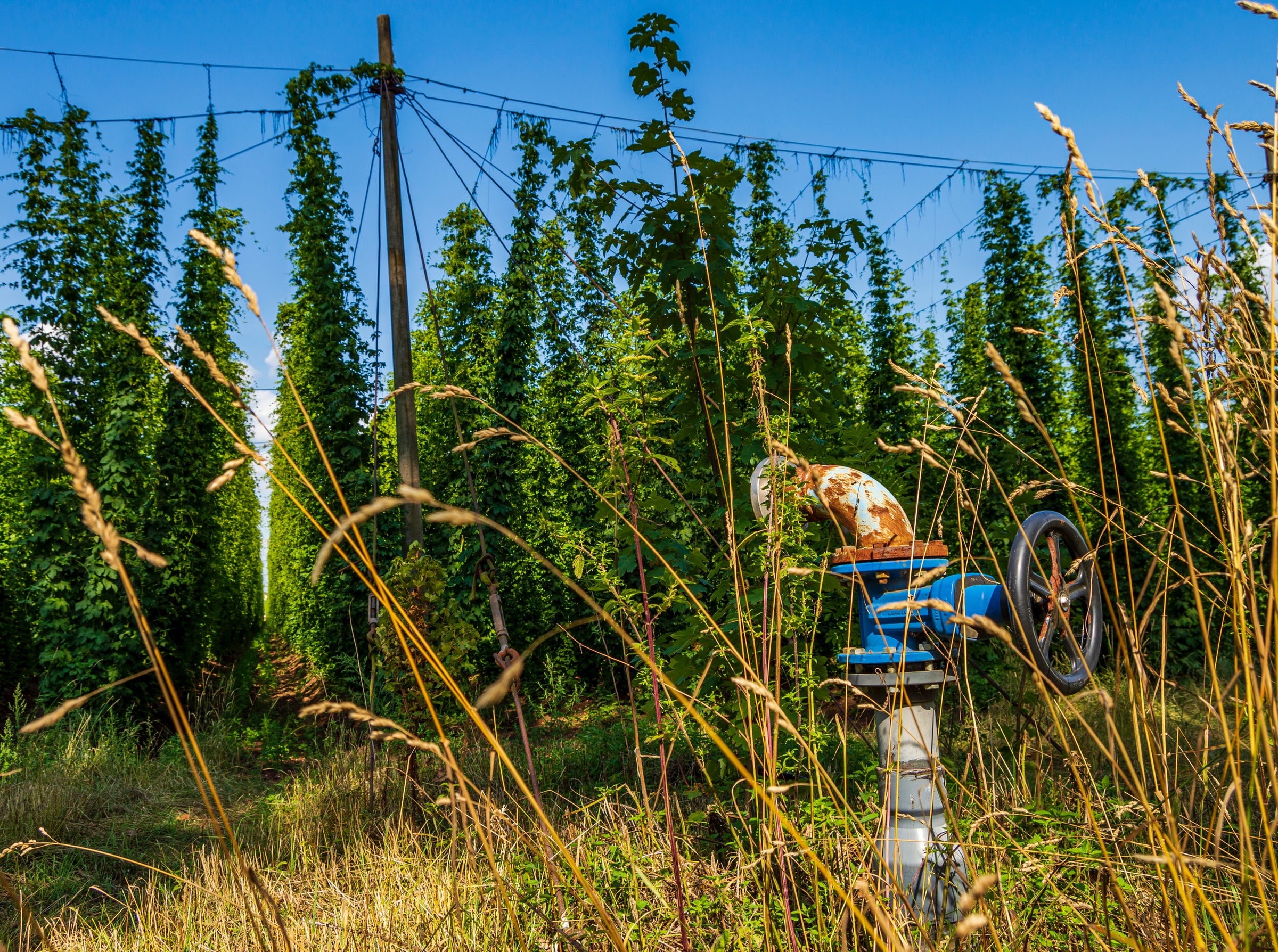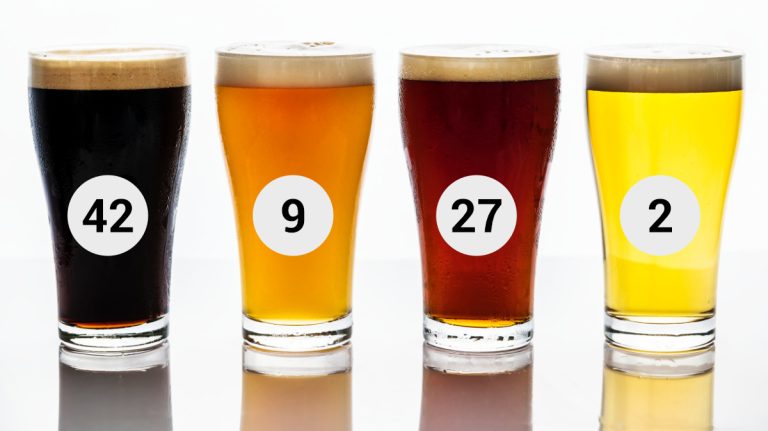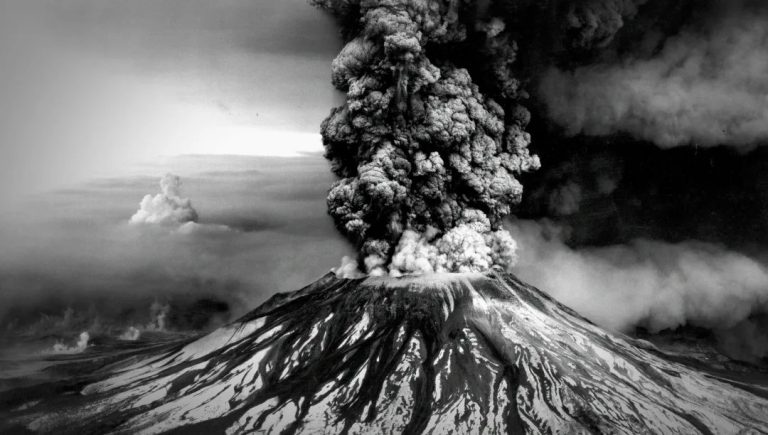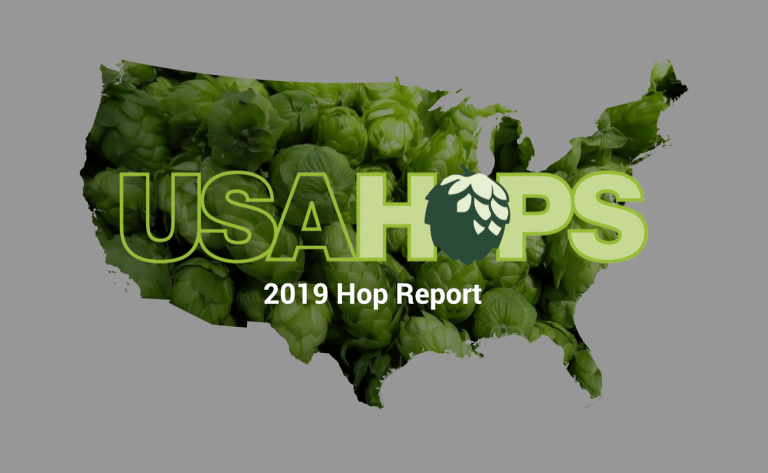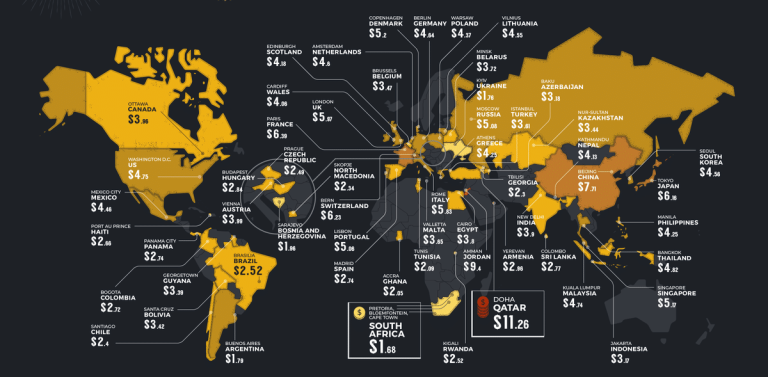USDA Releases 2022 Hop Planting Report
On June 10th, the United States Department of Agriculture’s National Agricultural Statistics Service (USDA-NASS) released their annual report on hop acres planted. The report shows hop acreage decreased by 1.6% in 2022, down from 2021’s record high.
View the 2022 USDA-NASS Annual Report
The report shows that in Washington, the largest producing state in the country, decreased their hop acreage strung for harvest this year by 3%. Idaho decreased as well by 3%. Oregon was the only Pacific Northwest state to increase hop acreage, increasing by 9% over 2021.
Hop Acreage Strung vs Harvested
First, let’s set the stage on what we are actually looking at with these numbers.
The 2022 numbers are “strung acres”, while the 2021 column shows “acres harvested”. These are obviously different because the amount of hops planted (i.e. strung) will sometimes be higher than what was eventually harvested later in the year due to insect damage, climate changes, and the age of the plants. If the amount harvested was more than what was planted… well, that means someone, somewhere doesn’t know how to count.
We can see how different these numbers actually are by looking back at 2021’s annual report. Here are the five top hops with their 2021 strung amount versus their final harvested numbers, as reported by the USDA.
| Hop | ’21 Strung | ’21 Harvested | Difference |
|---|---|---|---|
| Citra | 11,994 | 11,981 | -0.10% |
| Mosaic | 6,374 | 6,417 | +0.70% |
| CTZ | 5,593 | 5,569 | -0.40% |
| Cascade | 4,208 | 4,328 | +2.90% |
| Simcoe | 4,151 | 4,059 | -2.20% |
As you can see, the amount planted never matches that of what was harvested. However, they are mostly within the margin of error. While it may seem like an error by the USDA to compare the harvested amount of one year to the strung amount of the new year, there is likely a good reason for it. As we can see in the table above, there is a good bit of fluctuation – up and down – to the point where it appears that the harvest amount may be more accurate. In addition, a hop producer’s sales are based on the amount of a particular hop that they were able to harvest. So if that particular year’s inventory sold out too quickly, then that means they need to grow more of that hop the next year.
Most Grown Hops
In 2021, the five most grown hops were, Citra, Mosaic, CTZ, Cascade, and Simcoe.
In 2022, it is the same five hops, but the order has changed. CTZ decreased significantly (like we said it would, by the way), while the other four increased by varying degrees.
| Hop | ’21 Harvested | ’22 Strung | YoY Change |
|---|---|---|---|
| Citra | 11,981 | 12,121 | 1.2% |
| Mosaic | 6,417 | 6,513 | 1.5% |
| CTZ | 5,569 | 4,079 | -26.8% |
| Cascade | 4,328 | 5,075 | 17.3% |
| Simcoe | 4,059 | 4,526 | 11.5% |
Hops with Decreasing Acreage
CTZ
CTZ hops have aroma descriptors that include black pepper, licorice, curry and subtle citrus. CTZ stands for (Columbus Tomahawk and Zeus), which are three slightly different varieties. All have virtually identical brewing values and aromas. It can be…
Alpha Acids: 14.5-17%
Beta Acids: 4.5-5.5%
Cohumulone: 28-35%
Country: USA
Purpose: Dual
Total Oils: 2.5-4.5 ml/100g
Profile: black pepper, licorice, curry, citrus, cannabis & dank
The most notable hop with a significant decrease is CTZ. Idaho and Washington each dropped their land dedicated to growing CTZ by about 1,000 acres. This 26.8% decrease in land appears to be mostly due to the fact that they wanted to repurpose the land for more in-demand hop varieties.
El Dorado also saw a significant drop, with 205 acres less in Washington, and 329 acres in Idaho. This will amount to basically a 30.8% drop in 2022 El Dorado inventory compared to last year.
The bittering hop Pahto decreased as well. Pahto’s dedicated acreage dropped by 19%, which is exclusively grown in Washington state. Pahto’s acreage has skyrocketed over the last couple of years, and this is probably that hop finding a more acceptable level. Bittering hops are still used extensively, especially clean ones like Pahto, but it was being grown at an unsustainable level since 2019.
Unexpectedly, Sabro has decreased by over 48%. This is a shock to me, since juicy, aroma hops have done nothing if not increase in importance among brewers.
Hops with Increasing Acreage
Strata
The Strata hop has many layers of different fruit flavor, dried and fresh, anchored with a dried chili-cannabis-funk. Late hot side additions using Strata bring out layers of rounded-tropical plus bright-fresh fruit flavors; dry hopping yields more g…
Alpha Acids: 11-12.5%
Beta Acids: 5-7%
Cohumulone: 21%
Country: USA
Purpose: Dual
Total Oils: 2.3-3.5 ml/100g
Profile: cannabis, grapefruit, passion fruit, strawberry, dank & musty
Strata‘s acreage has increased 30% from 2021, which is exclusively in Washington state.
Eureka is moving up the ranks as well. It saw a huge 27% increase in acres dedicated to the aroma hop in 2022.
Cashmere is rising up the ranks in growth statistics. It was a big mover from 2020 to 2021, and it is doing similar this year as well. It is being grown on 12.4% more acres than in 2021.
Old is new again. Chinook‘s acreage as risen by almost 16%, while Centennial‘s total acres has rose by 9%.
